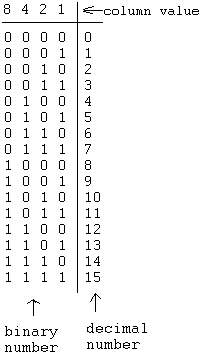Spike said:
and more often than not, Hexadecimal (Base 16).
This is what I was inferring, base16, hexadecimal which has 'numbers' in the
range 0-9,a-f. Base16 is <> Base2 and therefore is not binary. Memory opertaions
take place on 8bits and this creates a maximum value of FF(base16), or 255(base10). These are not binary.
It is always true that a 'digital computer' uses binary logic cards and circuitry.
If your definition of binary extends to software implementation to testing or
comparing values ( if x equals y then ... ), then you're right, because that's
the only way to create the code to trigger the hardware do the evaluation.
There are two common character codings, ASCII and EBSDIC, both operating
over the full range of Base16. A character encoding is the 'Roseta Stone' used to 'assign value'
to a given number or location in the address range. For example, EBCDIC assigns
the character 'A' to the location C1, while ASCII assigns 'A' to 41
There have been some recent machine that use a 7bit code known as Octal,
eg: Tandem NSii. RS232 serial line coding is also 7bit chunks.
Strickly speaking, Binary is a number system using Base2.
